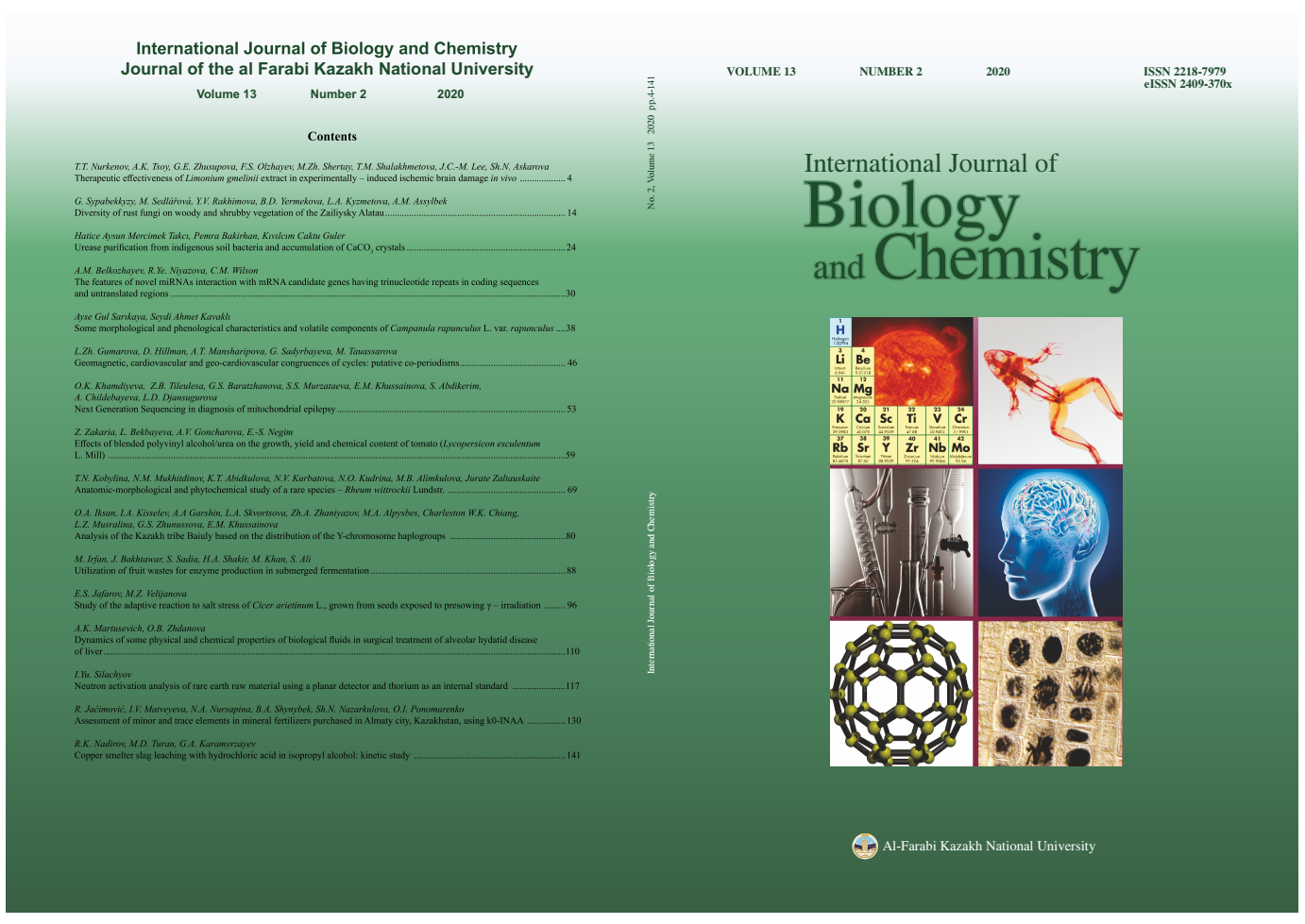Anatomic-morphological and phytochemical study of a rare species - Rheum wittrockii Lundstr.
DOI:
https://doi.org/10.26577/ijbch.2020.v13.i2.09Abstract
The article presents the features of the anatomical and morphological structure of the vegetative organs of Rheum wittrokii Lundstr. and the results of its qualitative and quantitative phytochemical analyses. The structure of the leaf shows the presence of calcium oxalate druses, which are located mainly under the layer of columnar mesophyll, along the Central part of the leaf blade. Druses in the spongy parenchyma are clearly distinguished and have an almost spherical shape with a peculiar needle-like structure. In the main vein, sections of the sclerenchymic lining are adjacent to the conducting bundle. The covering tissue of the roots has a secondary structure and is represented by a three-layer periderm. In the cells of the main parenchyma of the cortex, numerous calcium oxalate druses are found, which have a round-crystal configuration and are collected in small groups. The vessels of the root xylem are large with ladder and mesh perforation. Features of the main stem parenchyma are its larger, rounded-oblong or oval shape with slightly thickened cell walls. The revealed anatomical features can be used in the case of the diagnosis of medicinal plant raw materials. The study of the chemical composition, the study of biological activity and the development of new herbal medicines is relevant. As a result of studying the chemical composition of the ethanol extract of Rheum wittrokii obtained by extracting 96% ethanol, 8 main components were identified. Rhizomes are dominated by chrysophanic acid with an identification probability of 41.4%. The presence of components was found: chrysarobin, chrysophanic acid, emodin-3-methyl ether, emodin-1,3,8-trihydroxy-6-methylanthracene-9,10-dione, which are directly involved in the body’s metabolism, providing antioxidant, antiseptic and anti-cancer effects, and also help in the removal of toxins from the body, which has a beneficial effect on the liver, increasing the level of glycogen.
Downloads
How to Cite
Issue
Section
License
ааа





